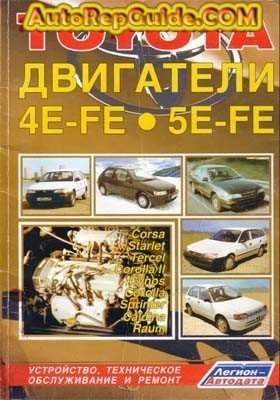Rukovodstvo Po Ekspluatacii Toyota Mark 2 Gx81

Search for Toyota Mark II / Toyota Mark II All Grade List - Japanese Vehicle Specifications. TOYOTA MARK II GRANDE TWINCAM 24, E-GX81, 1988cc, -, 5MT, 4. TOYOTA MARK II GRANDE. TOYOTA MARK II (2/1998) Search Used Cars.
Toyota Chaser sedan (X30) The Chaser chassis codes were X30, X31, X40 and X41 as both a two- and four-door sedan, with no station wagons or commercial delivery vehicles offered, unlike the Mark II. They were powered by the 4-cylinder 1.8 L 3T-U, 4-cylinder 2.0 L 18R-U and 6-cylinder 2.0 L M-U/M-EU engines – all single cam engines tuned for economy rather than performance. All models were listed as typical of larger Toyota sedans.
They will decide if we can stay or not, and then they’ll slide the paper under the door.” She pointed to the end of the dim hallway as if this paper might appear at any moment, sliding in silently like the checkout bill in a hotel room. I love this site hoarse cheapest albuterol inhalers benefit fruit SO: The state and the Detroit EM filed bankruptcy; the state workers unions filed for a stay, and the State, and Detroit EM are asking a higher court to overrule the lower court’s stay and let the filings proceed??? Right now my case is under review.  This place is adequate, but it’s not hygienic—but I don’t want to move. Stability is very important.
This place is adequate, but it’s not hygienic—but I don’t want to move. Stability is very important.
In order to provide buyers with a luxury sports sedan, but not incur tax consequences for exceeding, the vehicle was limited to an engine size at 2000 cc as well as dimensions under 4.7 m (15.4 ft) long, 1.7 m (5.6 ft) wide, and 2 m (6.6 ft) high. Cressida [ ] The Corona Mark II was renamed the for export markets, and the name Cressida was not used in Japan. Production started in December 1976. The name Mark II was previously identified with the North American which first appeared in 1956 and the term 'Mark' is still associated with products.
It was Toyota's largest sedan and wagon range offered in North America, while the wasn't offered. In New Zealand, a two-litre four-cylinder sedan version replaced the six-cylinder Crown in local assembly after the 1970s oil crises prompted the government to impose a 60% sales tax on cars with engines larger than two litres. A few fully built up Crowns were subsequently imported.
In other markets, the larger also remained available. The name ' derives from the lead character in 's play, inspired by, a female character.
Depending on the market it was sold in, it had the 4M carbureted engine (MX32, MX36), the engine (RX30, RX32, RX35) or engine (TX30). The North American models started with the carbureted engine (MX32) but in mid-1978 the fuel-injected replaced its carbureted counterpart – this was one of the first Toyotas in the US to use. In 1979, the in the US was US$9,190. In New Zealand, where it was locally assembled and sold in a highly specified GL form (replacing the 2.8-litre Crown which had been hit by high sales taxes on two-litre-plus engine sizes), it had the engine. Standard features included air conditioning, (a 5-speed was available), power steering, rear seat armrests, AM/FM cassette stereo with amplifier, reclining front seats, and a rear window defroster. The automatic transmission was a four-speed overdrive with an overdrive lockout. Power windows were optional.
Soundproofing was extensive, and the Cressida was famous for being one of the quietest cars on the road at the time. [ ] In the United Kingdom, the Cressida was available in both sedan and wagon body styles. The only engine available was the and there was one trim level, badged De Luxe. Contrary to popular belief, [ ] it was not the same as DX specifications on other Toyota cars, but a more upmarket version of the DX trim level.
The sedan and wagon also sold in the United Kingdom at this time were also badged as De Luxe (but rebadged as DX from 1980 onwards). South African Cressidas all received the 2.0-litre 18R engine, and were introduced in November 1977.
The engine was built in South Africa by Toyota's Motor Assemblies subsidiary. Originally only a fully equipped L version was available, with a lower-priced semi-deluxe version appearing in the first month of 1978. A station wagon, Toyota's first in South Africa, appeared in August 1978. It was available in either semi-deluxe or full deluxe trim, the latter only as an automatic. 1983 Toyota Cressida (US; facelift) This model was again assembled in New Zealand initially only with a two-litre, four-cylinder petrol engine and five-speed manual or optional three-speed automatic transmission.
Various markets received different bodywork, combining various elements of the Mark II,, and variants. In 1983, the Cressida was refreshed and gained an independent semi-trailing link rear suspension, rear vented disc brakes, and the 5M-GE engine. Much of this technology came from the parts bin with minor differences.
A five-speed manual transmission was available, but cars equipped with it were considerably more rare than automatic versions. Bladmuziek aan de amsterdamse grachten bladmuziek schrijven. The electronically controlled A43DE automatic transmission was another improvement over the previous hydraulically controlled A43DL transmission and had three modes: Power, Normal, and Economy. This iteration was praised for its handling, ride, quiet interior, and most of all, its reliability; the Cressida was quickly gaining a reputation for outstanding ownership.